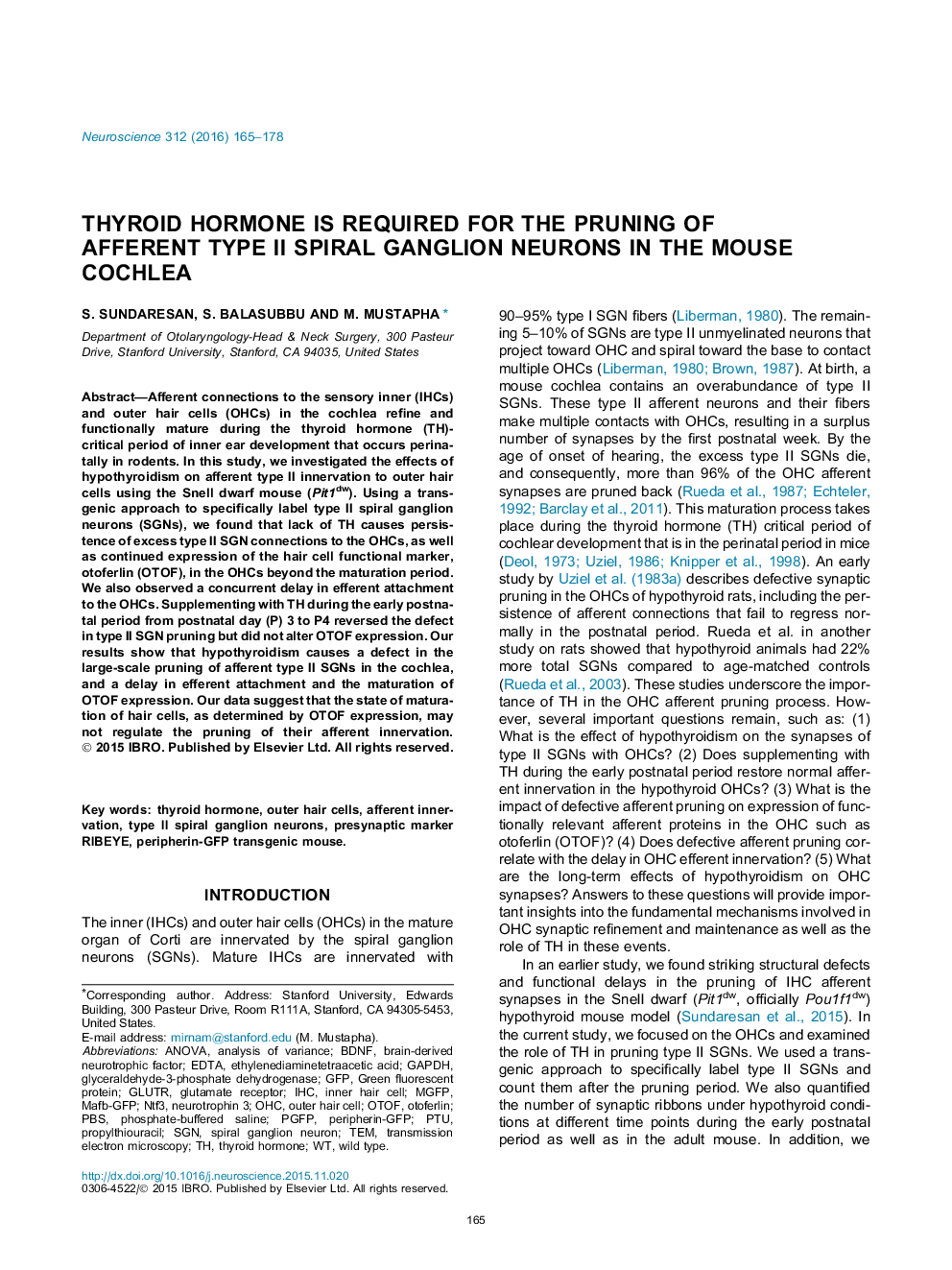| Article ID | Journal | Published Year | Pages | File Type |
|---|---|---|---|---|
| 4337427 | Neuroscience | 2016 | 14 Pages |
•Hypothyroid mice retain excess afferent innervation to outer hair cells.•Excess innervation is made up of type II spiral ganglion neurons.•Otoferlin expression persists in the outer hair cells of hypothyroid mice.•Thyroid hormone given from postnatal day 3–4 restores normal afferent innervation.•Afferent pruning may not be regulated by the state of hair cell maturation.
Afferent connections to the sensory inner (IHCs) and outer hair cells (OHCs) in the cochlea refine and functionally mature during the thyroid hormone (TH)-critical period of inner ear development that occurs perinatally in rodents. In this study, we investigated the effects of hypothyroidism on afferent type II innervation to outer hair cells using the Snell dwarf mouse (Pit1dw). Using a transgenic approach to specifically label type II spiral ganglion neurons (SGNs), we found that lack of TH causes persistence of excess type II SGN connections to the OHCs, as well as continued expression of the hair cell functional marker, otoferlin (OTOF), in the OHCs beyond the maturation period. We also observed a concurrent delay in efferent attachment to the OHCs. Supplementing with TH during the early postnatal period from postnatal day (P) 3 to P4 reversed the defect in type II SGN pruning but did not alter OTOF expression. Our results show that hypothyroidism causes a defect in the large-scale pruning of afferent type II SGNs in the cochlea, and a delay in efferent attachment and the maturation of OTOF expression. Our data suggest that the state of maturation of hair cells, as determined by OTOF expression, may not regulate the pruning of their afferent innervation.
